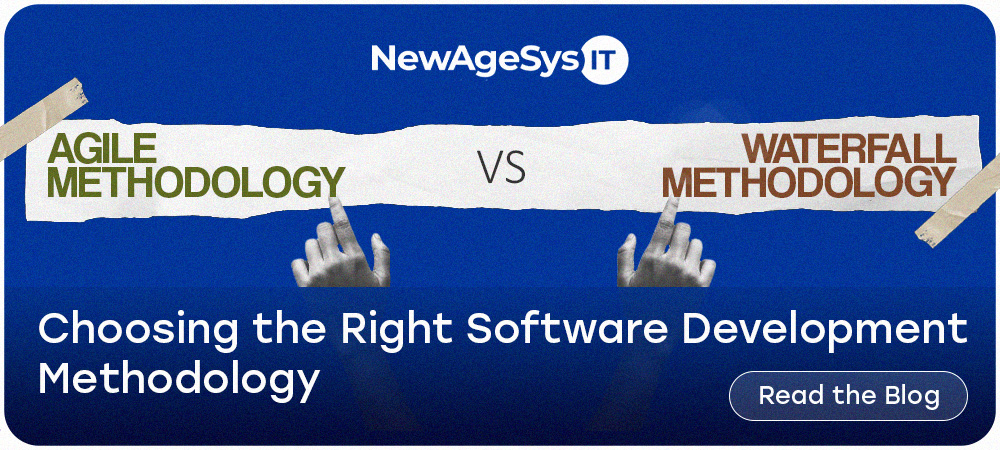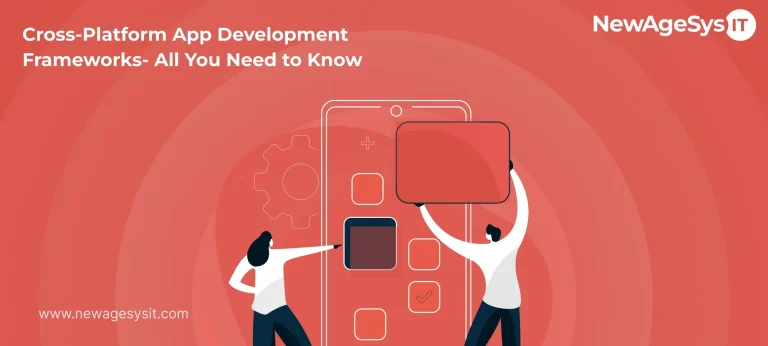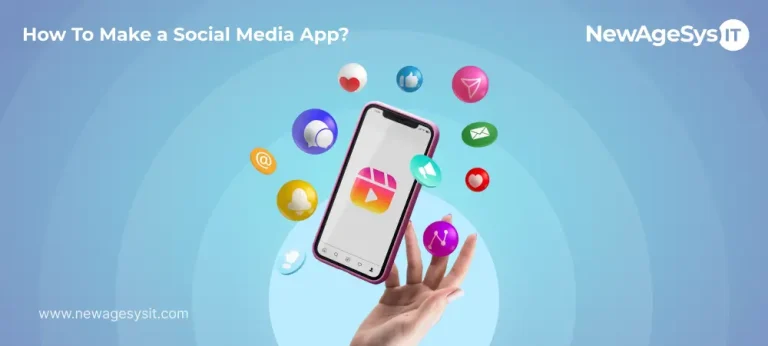Understanding Agile and Waterfall
Software development companies often choose Agile or Waterfall methodologies when undertaking projects like mobile app development, web development, or custom software development services. Selecting the right software development methodology will determine the success of any project. This blog aims to discuss these two methodologies in detail, their advantages, disadvantages, and best practices that will help companies make informed decisions.
What is Agile?
Agile is a flexible, incremental, and customer-feedback-oriented dynamic approach to the right software development services which fosters adaptability for changing requirements through incremental iterative work sequences called sprints.
The key principles of Agile include:
- Customer satisfaction through early and continuous delivery of valuable software: Agile focuses on delivering functional software regularly, ensuring that customers see progress and provide feedback continuously.
- Welcoming changing requirements, even late in development: Agile embraces change, allowing project teams to adjust priorities and features as new information or changes in the market arise.
- Delivering working software frequently, with a preference for shorter timescales: This principle ensures that teams can address issues promptly and keep stakeholders engaged with regular updates.
- Close, daily cooperation between business people and developers: The Agile team ensures clear collaboration and communication within the team whereby everyone works towards the same goal.
- Projects built around motivated individuals, with a supportive environment and trust: Agile teams are usually self-organizing with decision-making powers hence they end up having high morale resulting in good results.
- Face-to-face conversation: While digital communication tools play an important role in business, agile emphasizes that problems should be resolved more quickly by conversation with people directly involved.
- Working software as the primary measure of progress: Agile measures success based on the delivery of functional software rather than on extensive documentation.
- Sustainable development, able to maintain a constant pace indefinitely: Agile promotes a balanced workload to avoid burnout and ensure long-term productivity.
- Attention to technical excellence: For Agile, quality workmanship as well as robust designs minimize technical errors.
- Simplicity: Agile teams focus on delivering only what is needed avoiding any unnecessary complexity beyond that.
- Self-organizing teams: empowered agile teams generate their working methods leading to higher levels of creative thinking thus increasing innovation and efficiency rates.
- Regular adaptation to changing circumstances: Agile involves frequent reflection and adaptation, allowing teams to improve continuously.
What is Waterfall?
A waterfall is a succession of stages, each must be completed before the start of the next one. Waterfall is for projects where requirements are clear and very specific. It follows a series of phases that is sequential in nature and is also highly structured and predictable.
Some of the key features of Waterfall include:
- Comprehensive upfront planning with detailed documentation: At the start of a project, the waterfall is characterized by thorough planning and documentation that can help clear up requirements and expectations.
- Sequential phases, including requirement gathering, system design, implementation, integration, testing, deployment, and maintenance: All phases in a waterfall approach are separate and have to be done straightforwardly.
- Defined roles and responsibilities for team members: Waterfall projects usually involve specific jobs for people thus running smoothly even with large groups of workers.
- Easy to manage and track progress with clear milestones: The structured nature of Waterfall makes it easy to monitor progress and manage timelines as every phase has definite deliverables and deadlines.
- Inflexibility in handling changes once the project is in the testing phase: One drawback associated with this technique is that it becomes rigid when changes are made at later stages making it difficult or expensive to change anything.
Comparing Agile and Waterfall
Flexibility and Adaptability
Agile’s iterative approach allows for significant flexibility and adaptability. Teams can respond quickly to new information, changing requirements, or customer feedback. This makes Agile very appropriate for mobile app development and custom software development projects where requirements may evolve. Among software development companies, they have become a popular choice because they ensure that the final product aligns closely with user needs and market demands.
Waterfall follows a structured and linear process. Changes are difficult to implement once the project is in the later stages. This makes Waterfall ideal for projects with well-defined requirements and low complexity, such as certain types of web development projects.
Project Management and Team Collaboration
Agile stresses team members’ collaboration as well as communication among them, stakeholders inclusive. To avoid wasting time due to lack of alignment and prompt addressing of issues, regular meetings like daily stand-ups and sprint reviews should be held. This collaborative approach fosters a strong team dynamic and continuous improvement. Agile’s emphasis on teamwork and frequent interactions can lead to better problem-solving and innovation.
Waterfall has clear sequential stages and defined roles, making it easier to handle large teams who possess special skills. The structured method ensures that each stage is finished before moving on to the next, minimizing any chances of project scope creep. This can be especially useful for large software development companies where web development projects involve a lot of documentation and the need for role definition.
Time and Cost Management
Agile emphasizes delivering small incremental improvements, which allow for continuous delivery while soliciting customer feedback at regular intervals. This approach helps in managing time and costs much more effectively since it enables adjustments throughout the life cycle of the project. Agile’s ability to pivot quickly can result in quicker timescales and better utilization of resources; thus, it is used effectively in customized software development services projects. Waterfall’s upfront planning and budgeting provide a clear picture of the project timeline and costs from day one. However, every alteration or unforeseen issue may cause significant delays as well as cost overruns. Waterfall’s thorough initial planning could be a plus when projects have fixed budgets as well as timelines so that everything is taken into account early enough.
Pros and Cons of Each Methodology
Agile
Advantages:
- Flexibility and adaptability to change.
- Continuous improvement and customer feedback.
- Increased collaboration and communication.
Disadvantages:
- Less predictability in terms of timeline and costs.
- Potential for scope creep due to changing requirements.
Waterfall
Advantages:
- Clear milestones and well-defined phases.
- Easier to manage for well-defined projects.
- Predictable timeline and costs.
Disadvantages:
- Inflexibility in handling changes.
- Difficulty in adapting to new information or requirements.
Choosing the Right Methodology for Your Project
Assessing Project Requirements
To choose what methodology will work for you best, start by understanding your project scope and objectives. The level of uncertainty involved should be determined. If your project requirements are clear and unlikely to change, Waterfall may be a suitable choice. For software development service projects with evolving requirements, Agile’s flexibility may be more appropriate. This assessment is crucial for determining the best approach for mobile app development or custom software development projects.
Considering Team Dynamics
Agile works best with small cross-functional teams that are built on collaboration. While waterfall methodology may suit big teams with specialized skills, mapped-out roles can only improve performance within them. Getting insights about your team’s strengths and working style will help you determine which approach to go by for maximum productivity.
Evaluating Client and Stakeholder Needs
Understand your client’s expectations and involvement level. Agile iterative methodology allows frequent updates hence making it ideal for clients who want to actively take part in the process. The waterfall structured approach fits those clients who prefer a hands-off mode with certain milestones set. The alignment of such methods with customer interests gives rise to enhanced satisfaction rates along with proper outcomes within projects.
Before we jump to the conclusion, read this blog to understand how to choose the right development services.
Conclusion
The choice between software development methodologies depends on your project’s needs, team dynamics, and client requirements. Agile is flexible and has continuous improvement while Waterfall provides structure and predictability. Appraise every single project’s specific needs to determine the most effective approach for successful completion. Your methodological selection can make all the difference between the failure or success of your project, particularly if you are a software development company engaged in mobile app development, web development, or custom software development.
For more insights on software development methodologies and services, visit NewAgeSysIT and explore our software development services. If you need mobile app development, web development, or custom software development we have experts who will offer guidance that will lead to success.
























